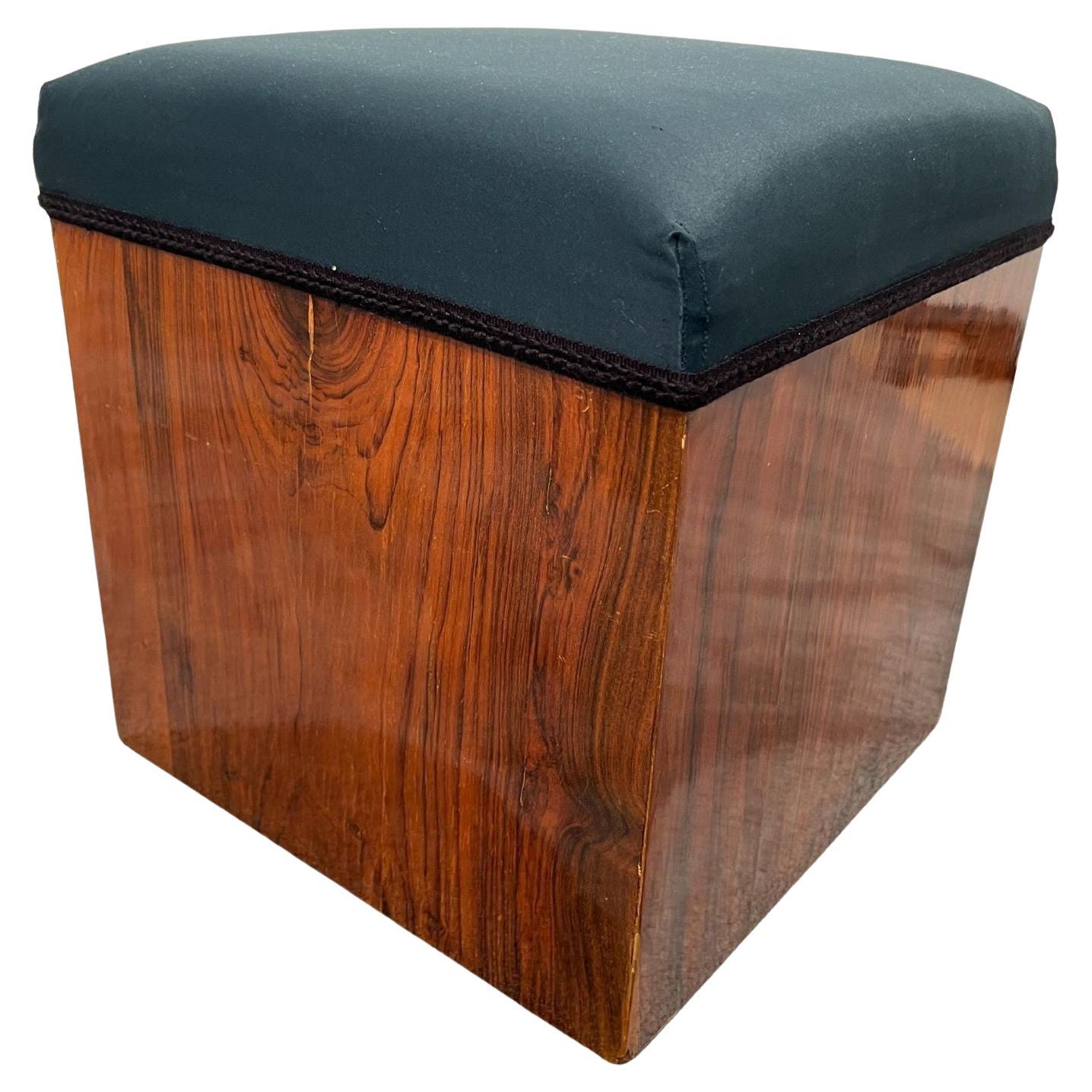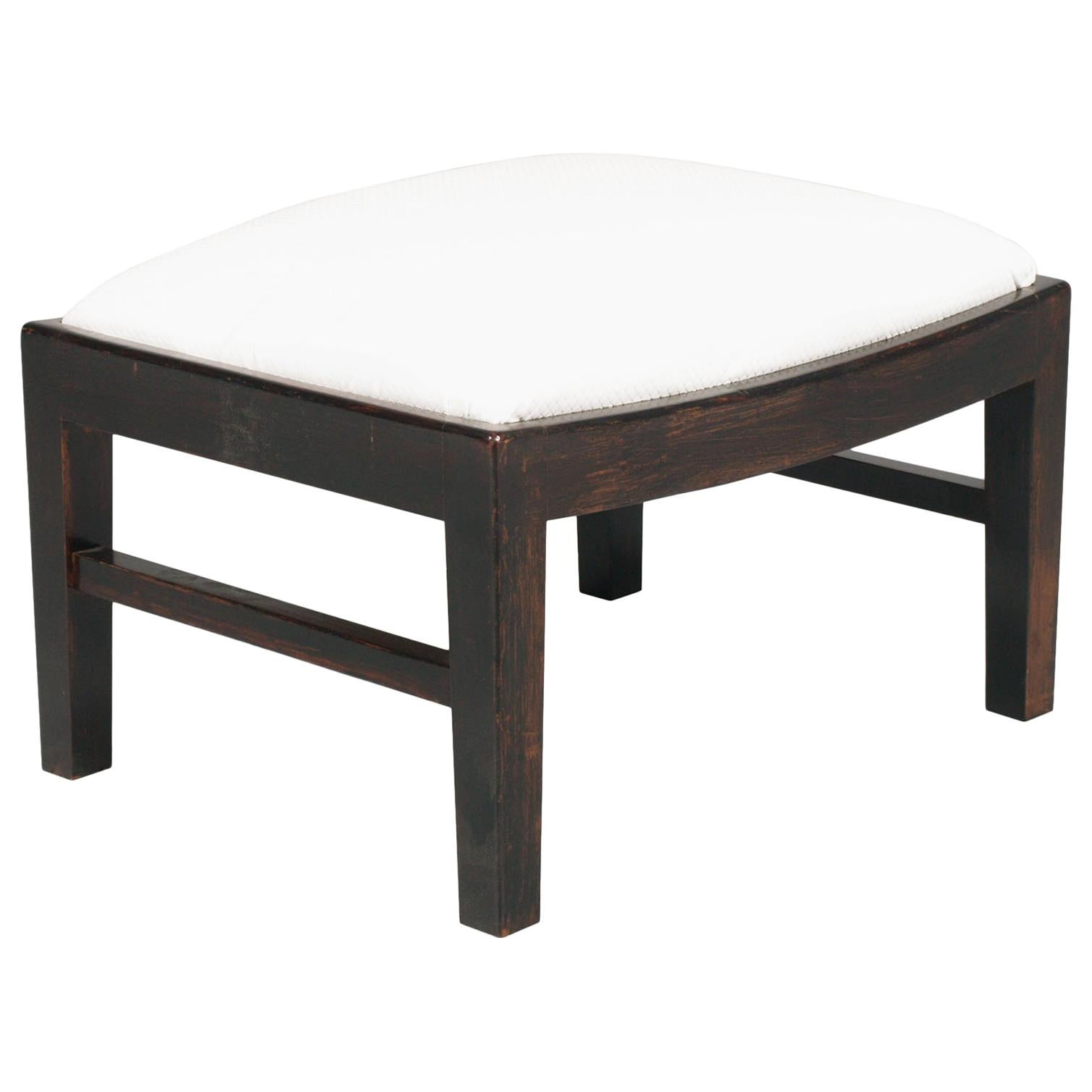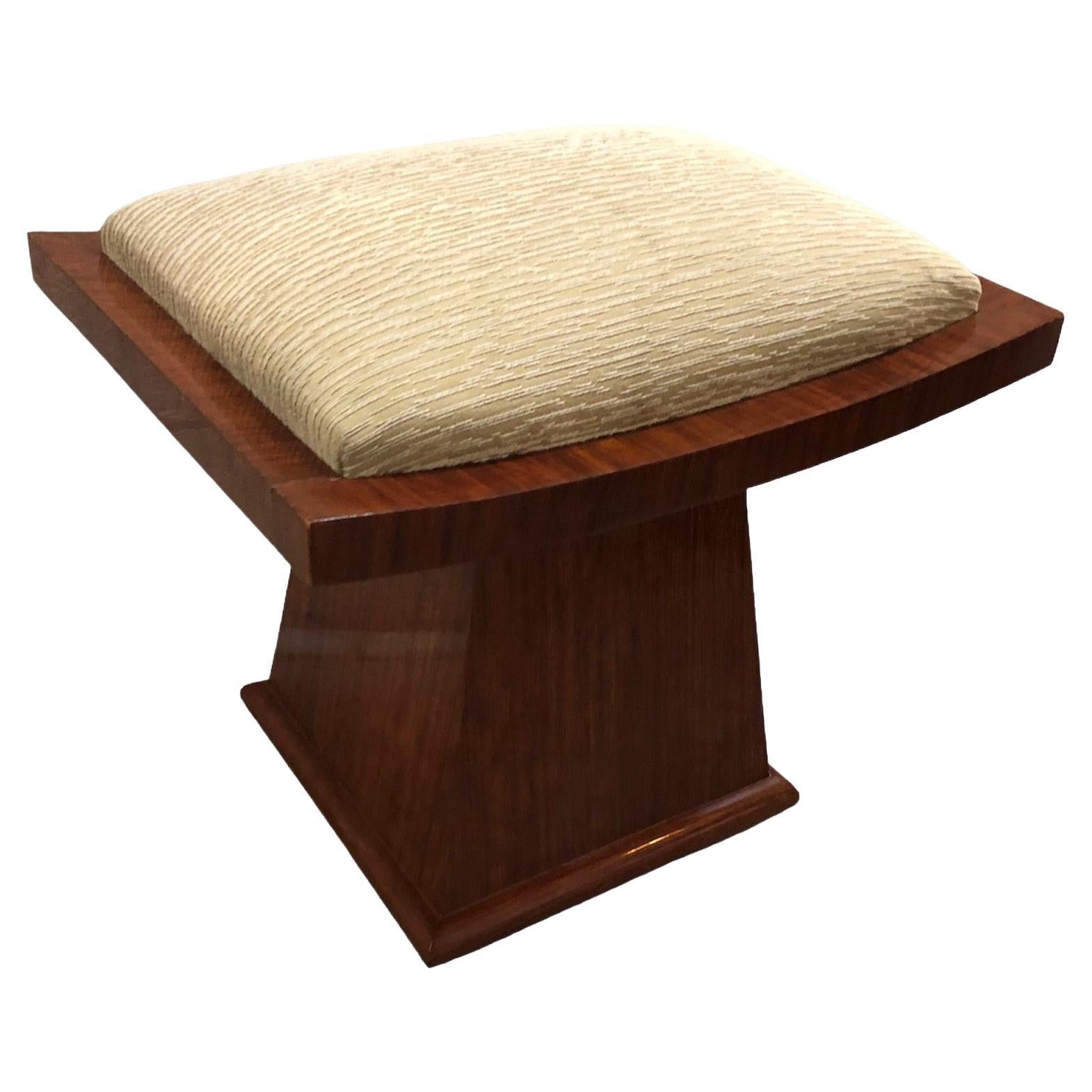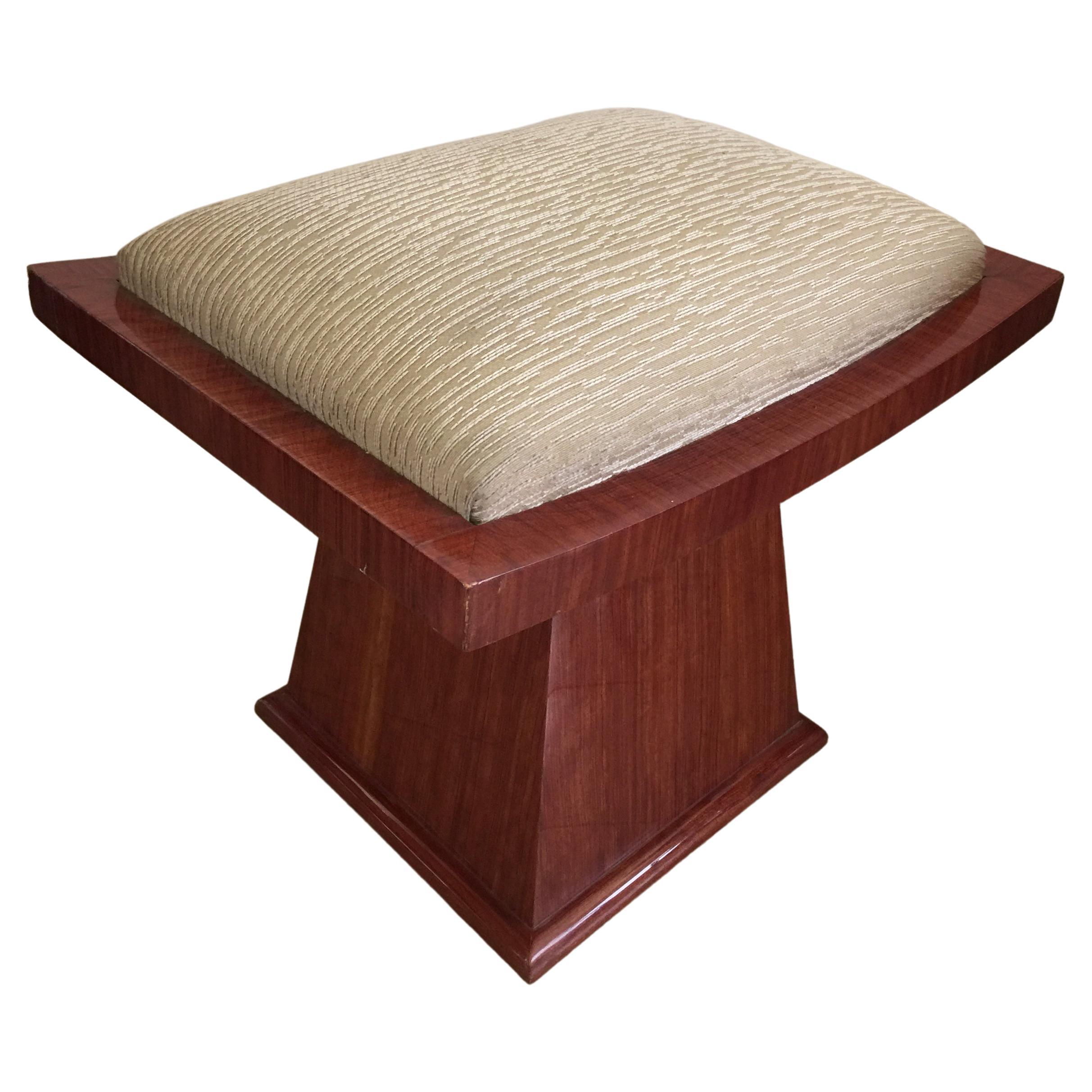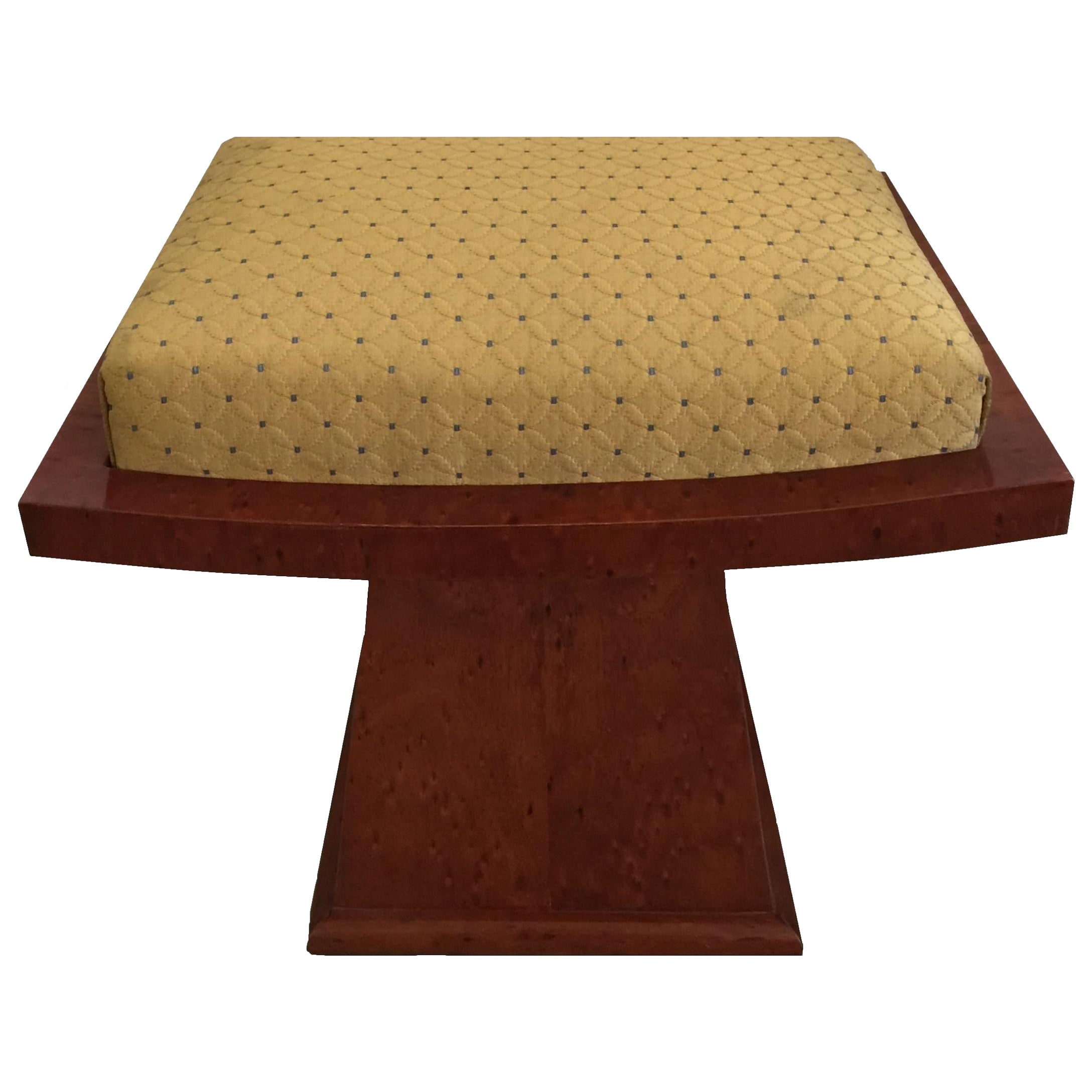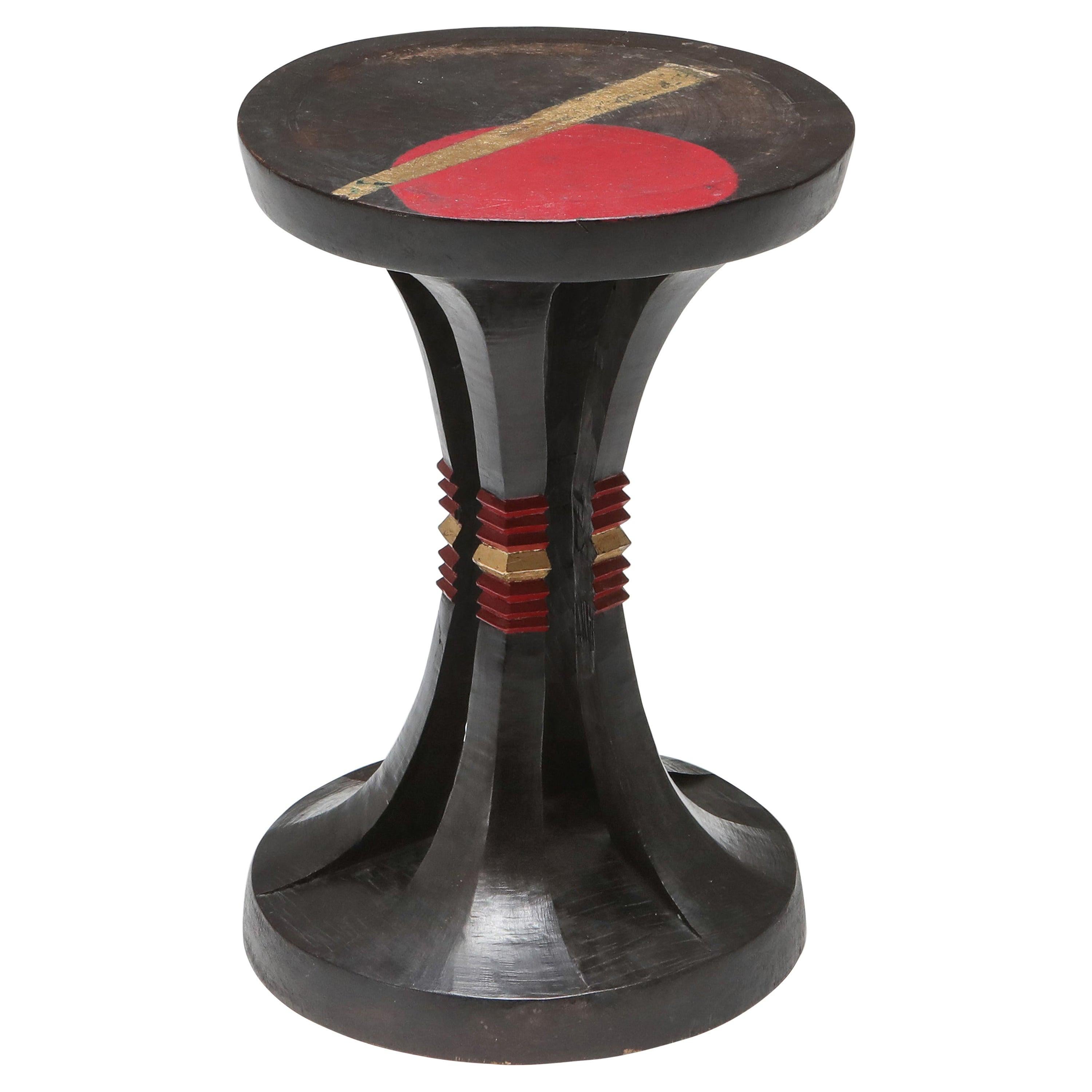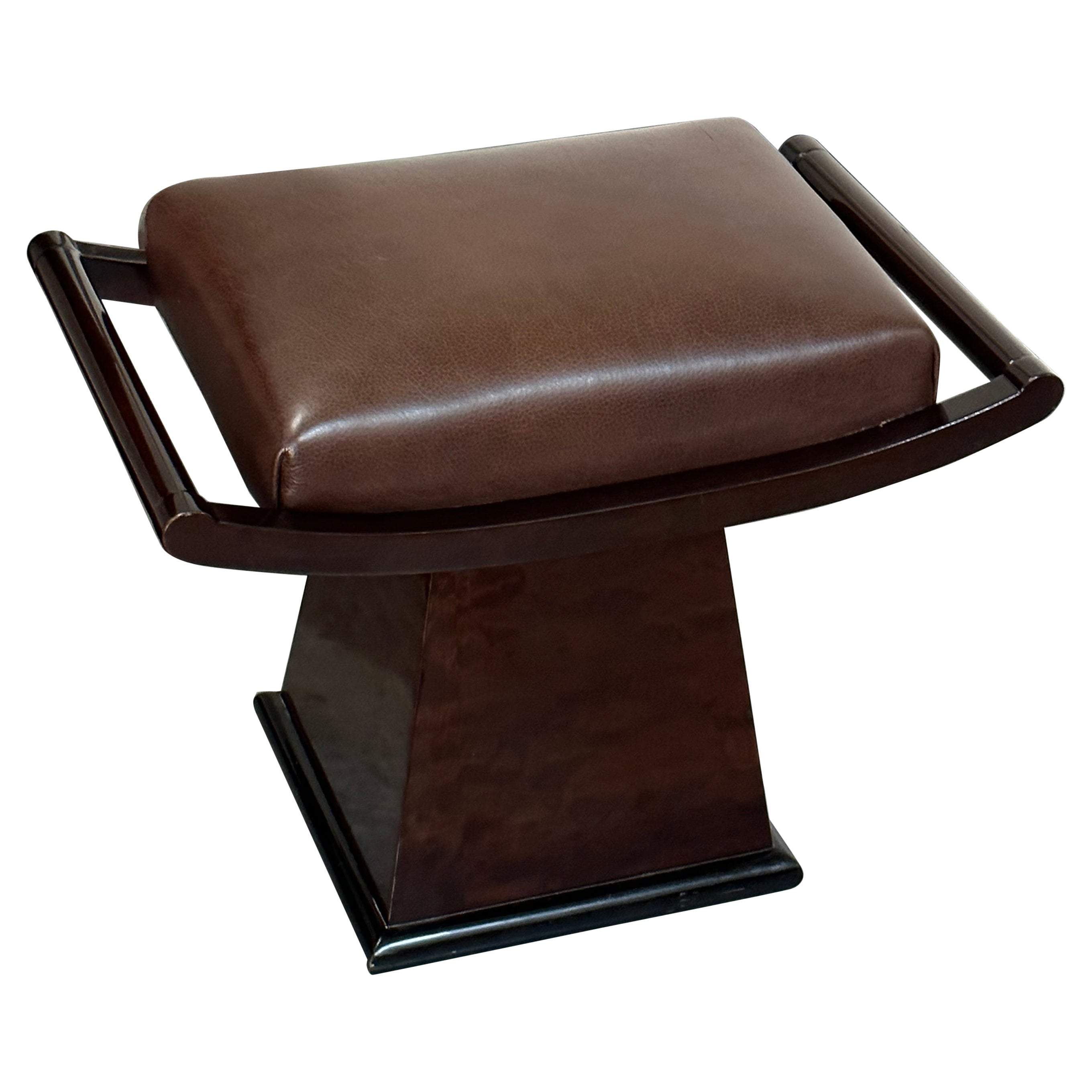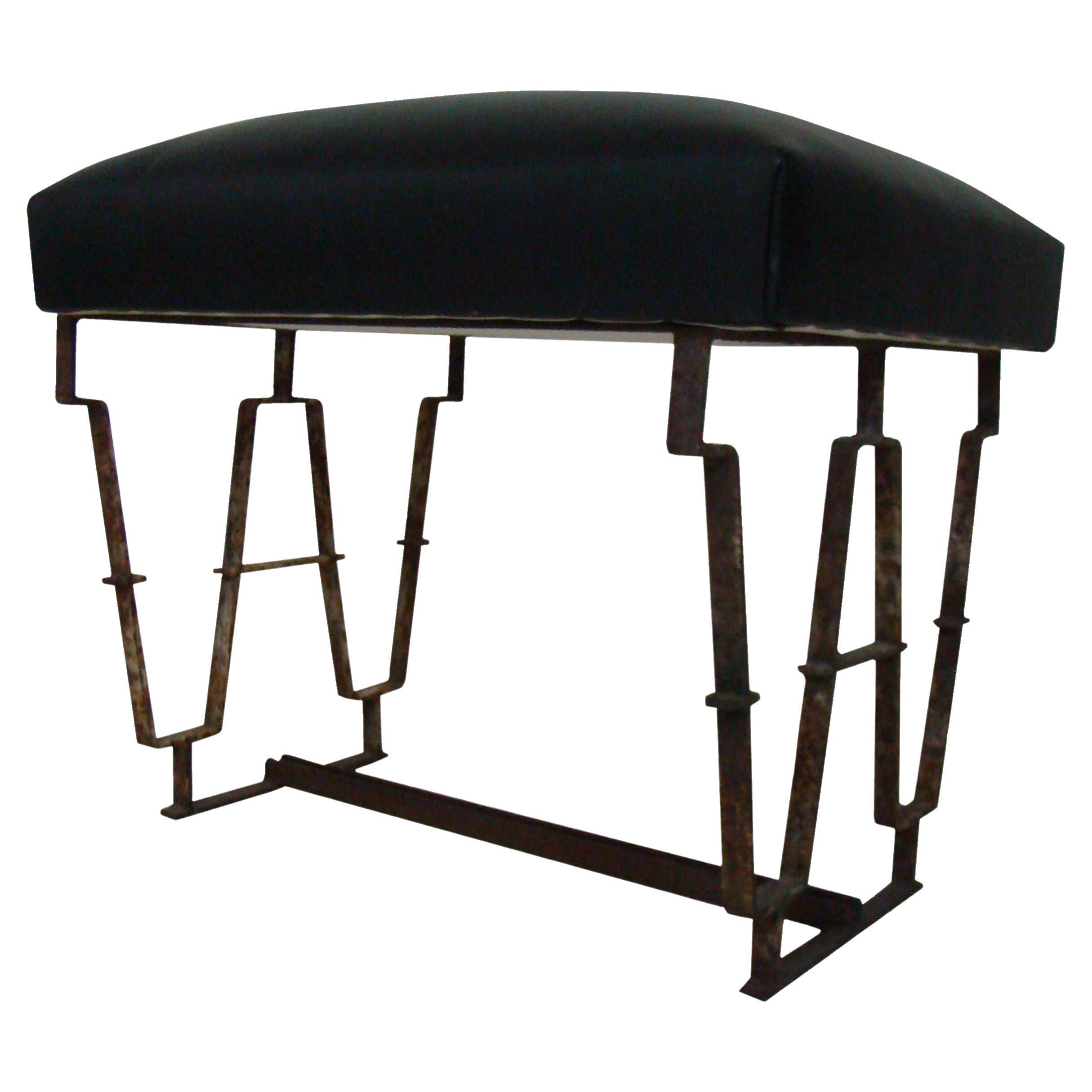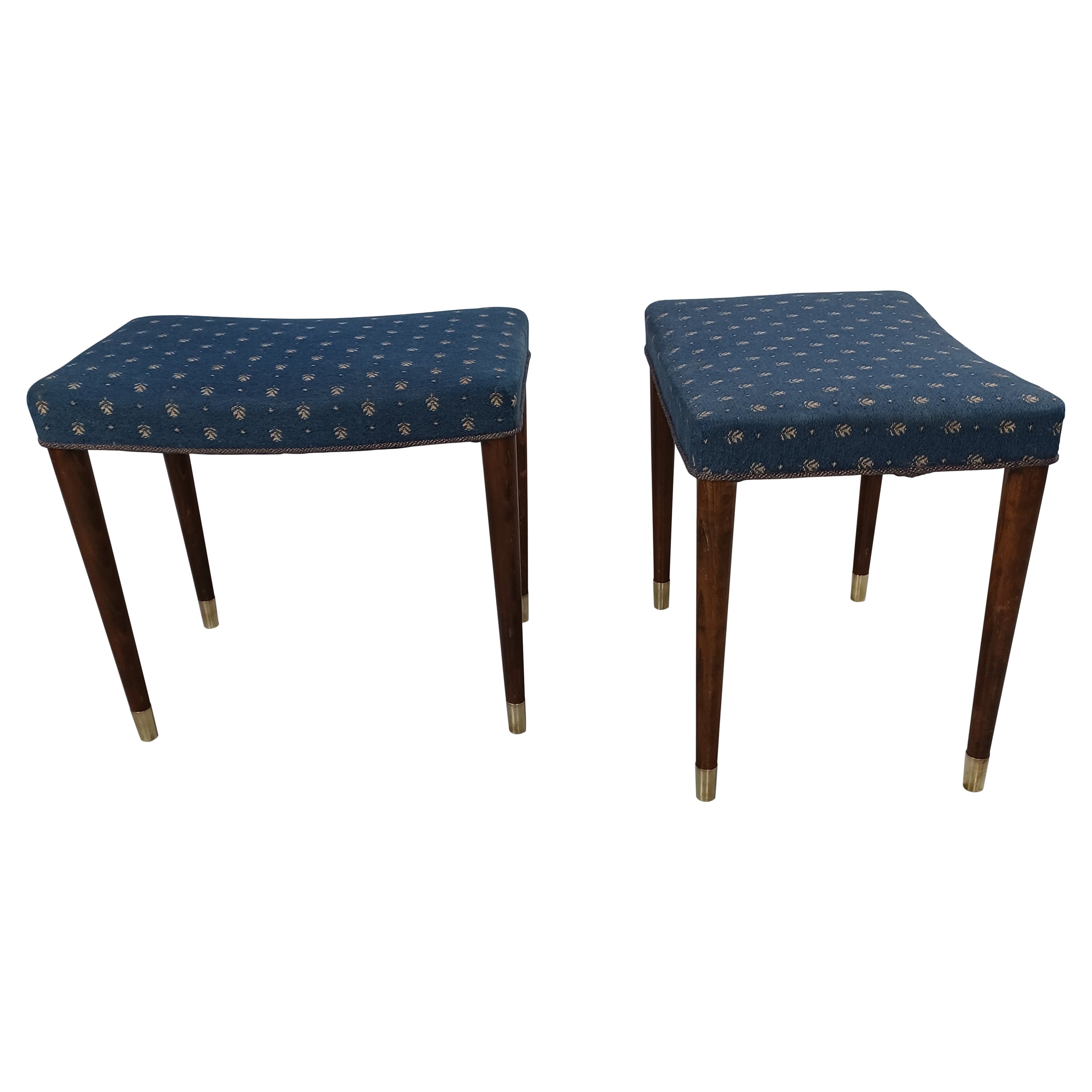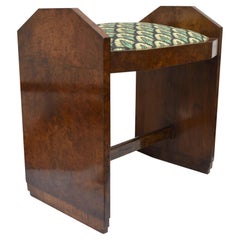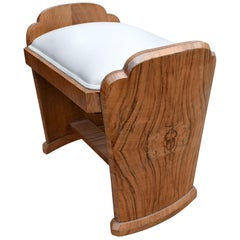
Art Deco Figured Walnut Dressing Stool, circa 1930
View Similar Items
Want more images or videos?
Request additional images or videos from the seller
1 of 8
Art Deco Figured Walnut Dressing Stool, circa 1930
About the Item
- Dimensions:Height: 19.69 in (50 cm)Width: 22.45 in (57 cm)Depth: 14.97 in (38 cm)
- Style:Art Deco (Of the Period)
- Materials and Techniques:
- Place of Origin:
- Period:
- Date of Manufacture:1930
- Condition:Wear consistent with age and use.
- Seller Location:Devon, GB
- Reference Number:1stDibs: LU2447318319052
About the Seller
4.9
Platinum Seller
These expertly vetted sellers are 1stDibs' most experienced sellers and are rated highest by our customers.
Established in 2002
1stDibs seller since 2016
1,111 sales on 1stDibs
Typical response time: 1 hour
More From This SellerView All
- Art Deco Figured Walnut Dressing Table Stool, English, circa 1930Located in Devon, EnglandVery stylish Art Deco dressing stool dating to the 1930s, can be used for dressing table or footstool. Newly reupholstered in an Art Deco style fabric, beautifully figured walnut ven...Category
Mid-20th Century English Art Deco Stools
MaterialsWalnut
- Art Deco Figured Walnut Drinks Cabinet, English, circa 1930Located in Devon, EnglandFor your consideration is this rather stylish 1930s Art Deco English drinks cabinet. Fabulous piece of furniture with not only kerb side appeal ...Category
Mid-20th Century English Art Deco Dry Bars
MaterialsGlass, Mirror, Walnut
- Art Deco Figured Walnut Coffee Table, circa 1930s, EnglishLocated in Devon, EnglandFabulous and totally original 1930s Art Deco walnut occasional table originating from England, UK. This table is ideal for modern day use either as a coffee table or center table. Th...Category
Mid-20th Century English Art Deco Center Tables
MaterialsWalnut
- Art Deco Heavily Figured Walnut Occasional Table, English, circa 1930Located in Devon, EnglandVery attractive 1930s Art Deco three tiered walnut table occasional table. Perfect Size for modern day use and having been through our workshops comes to you in showroom condition. L...Category
Mid-20th Century English Art Deco Tables
MaterialsWalnut
- Art Deco Occasional Table in Figured Walnut, English , circa 1930Located in Devon, EnglandStylish and totally authentic Art Deco English occasional table. A segmented walnut veneered top with legs that sweep down to a figured walnut under tier with ebonised accents makes ...Category
Mid-20th Century English Art Deco Tables
MaterialsWalnut
- Art Deco Figured Walnut Desk, English, c1930Located in Devon, EnglandFor your consideration is this exceptional Art Deco English walnut desk of good proportions and dating to the 1930's. A high level of craftsmanship and materials used is evident thro...Category
Mid-20th Century English Art Deco Desks
MaterialsChrome
You May Also Like
- Cubic Art Deco Stool, Walnut Veneer, France, circa 1930Located in Regensburg, DEBeautiful original Art Deco stool from France about 1930. Walnut veneered and polished. Covered with anthracite fabric and border finishing. Dimensions: H 38 cm x W 36 cm x D 37 cm.Category
Vintage 1930s French Art Deco Footstools
MaterialsFabric, Walnut
$911 Sale Price20% Off - 1930s Art Deco Stool, Footrest in Ebonized Walnut Restored, New UpholsteryLocated in Vigonza, PaduaArt Deco stool, footrest in ebonized walnut, restored, spring seat with white leatherette new upholstery. Measures cm: H 32, W 51, D 40.Category
Mid-20th Century Italian Art Deco Footstools
MaterialsLeather, Walnut
- Art Deco Stool, Material Iron, Country France, 1930Located in Ciudad Autónoma Buenos Aires, CStools Art Deco. Material: iron You want to live in the golden years, this is the stool that your project needs. We have specialized in the sale of Art Deco and Art Nouveau styles since 1982.If you have any questions we are at your disposal. Pushing the button that reads 'View All From Seller'. And you can see more objects to the style for sale. Why are there so many antiques in Argentina? In the 1880 – 1940 there was a grate wave of immigration encouraged by the periods of war that were taking place. 1st World War took place between 1914 and 1918 2nd World War took place between 1939 and 1945 The immigrants options were New York or Buenos Aires. Tickets were cheap and in Buenos Aires they were welcomed with open arms, as it was a country where everything was still to be done. Argentina was the country of new opportunities, labour was needed and religious freedom was assured, in many cases the of the family travel first until they were settled and then the rest of the family members join them. In the immigrant museum “Ellis Island Immigrant Building” in New York you can se the promotional posters of the boats that would take them to a new life. Between the years 1895 and 1896, Argentina had the highest DGP (gross domestic product) per capita in the world according to the Maddison Historical Statistics index, this situation arose due to the large amount of food being exported to European countries, which were at war. The Argentinean ships left the port of Buenos Aires with food, but they returned with furniture, clothes and construction elements, (it´s common to see this the old buildings of the historic neighbourhood of San Telmo, the beams with the inscription “Made in England)”, as well as many markets that were built in Buenos Aires, such us the San Telmo Market, whose structure was brought by ship and afterwards assembled in 900 Defensa Street. With the great influence of European immigrants living in the country, the children of the upper classes travelled to study in France, resulting in the inauguration of “La Maison Argentinienne”, on 27th of June 1928, in the international city of Paris, which hosted many Argentinians that were studying in Frace. It´s the fourth house to be built after France, Canada and Belgium, being the first Spanish-speaking one. Still in place today (17 Bd Jourdan, 75014, Paris, France). Many of the children of these wealthy families who attended international art exhibitions, museums and art courses abroad, took a keen interest in the European style. This is why Buenos Aires was at the time referred as “The Paris of South America”. Between the years 1890 and 1920 more than a hundred Palaces were built on Alvear Avenue the most exclusive avenue in Buenos Aires. Today some of these palaces have been transformed into museums, hotels and embassies. In the year 1936, the Kavanagh building was inaugurated, it was the tallest reinforced concrete building in South America. During 1994 the American Society of Civil Engineers distinguished it as an “international engineering milestone”, and it´s now considered a World Heritage of Modern Architecture. At the time was common to hire foreign architects such as Le Corbusier, who visited Buenos Aires/Argentina in 1929 and in 1948 he drew up the blueprints for a house built in La Plata City (which was declared a World Heritage Site). In 1947, the Hungarian architect Marcelo Breuer designed “Parador Ariston” in the seaside city of Mar del Plata. After an Argentinean student at Harvard University convinced him to come to Argentina. He worked on an urban development project in the Casa Amarilla, area of La Boca. The Ukrainian architect, Vladimiro Acosta, arrives in Argentina in 1928 and worked as an architect until que moved to Brazil. Antonio Bonet, a Spanish architect who worked with Le Corbusier in Paris, arrives in Argentina in 1937, where he carried out several architectural works and in 1938 designs the well-known BFK chair. Andres Kálnay, of Hungarian origin, made around 120 architectural masterpieces, among which the former Munich brewery stands out, he even made the furniture’s design. The German architect, Walter Gropius, director of the Bauhaus, lived in Argentina, where he wrote articles for “Sur” magazine and founded in Buenos Aires, an architectural firm with Franz Möller, who was also an architect, where he built two houses. At the same time several famous designers decided to immigrate to Argentina, among them we can find the well-known French designer, Jean-Michel Frank, who arrived in the country in 1940 and also worked for the Rockefeller family. Special pieces were made, which were sold exclusively in the country, such as the well-known German company “WMF”, who sold their products by catalogue, which were chosen by the ladies of high society in the list of wedding gifts, as well as the pieces designed by Christofle. The Swiss sculptor Alberto Giacometti, made special pieces for Argentinean mansions. In 1904 the first Jansen branch outside Paris was established in Buenos Aires, as the Argentinean clientele demanded a large amount of furniture, from the end of the 19th century to the mid-20th century. In 1970, the brand Rigolleau Argentina made pieces authorised by Lalique. The brands Maple and Thompson also set up shop in the country. The French plastic artist, Marcel Duchamp moved to Argentina in 1918-1919. Glass signed Gallé, Charder, Leverre, Schneider, Muller and other French firms. They were bought in flower shops and were given to ladies with beautiful floral arrangements. Some furniture manufacturers travelled to international fairs and bough the patterns to produce the furniture in Argentina, such as the furniture firm Englander and Bonta, who bought the patterns ins Italy. It is worth mentioning that in Argentina we have the largest community of Italians outside...Category
Vintage 1930s French Art Deco Stools
MaterialsIron
- Art Deco Stool in Wood, Country France, 1930Located in Ciudad Autónoma Buenos Aires, CStools Art Deco. Material: wood You want to live in the golden years, this is the stool that your project needs. We have specialized in the sale of Art Deco and Art Nouveau styles s...Category
Vintage 1930s French Art Deco Stools
MaterialsWood
- Art Deco Stool, Material Wood, Country France, 1930Located in Ciudad Autónoma Buenos Aires, CStools Art Deco. Material: wood You want to live in the golden years, this is the stool that your project needs. We have specialized in the sale of Art Deco and Art Nouveau style...Category
Vintage 1930s French Art Deco Stools
MaterialsWood
- Art Deco Stool, Year 1930, Material Wood, Country FranceLocated in Ciudad Autónoma Buenos Aires, CStools Art Deco. Material: wood You want to live in the golden years, this is the stool that your project needs. We have specialized in the sale of Art Deco and Art Nouveau style...Category
Vintage 1930s French Art Deco Stools
MaterialsWood

